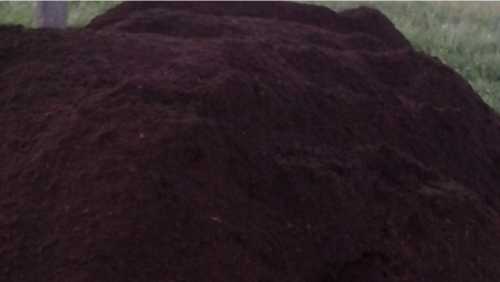
 Peat is a mineral belonging to sedimentary rocks. Forms at the bottom of swamps and stagnant reservoirs. It is a loose dark mass with the remains of decomposed plants and small animals.
Peat is a mineral belonging to sedimentary rocks. Forms at the bottom of swamps and stagnant reservoirs. It is a loose dark mass with the remains of decomposed plants and small animals.
The conditions for the formation of peat have their own specifics: complete decomposition of the components that make up its structure does not occur. With a deficiency of oxygen and high humidity, material with a high content of carbon, biologically active substances, and humus is formed.
Depending on the conditions of formation, there are two main types of peat – high-moor and low-lying.
Due to the high concentration of amino acids and humic acids, the main consumer of lowland and highland peat is agriculture.
Previously, to extract peat, they used the cut method. The technology is simple – they manually dug trenches in the swamp, where all the water flowed. After drying the soil, peat was extracted by digging out small briquettes.
Milling and lump (excavator) methods of peat extraction are now known. Milling mining occurs due to layer-by-layer cutting of the top layer with special combines. During the first cycle of loosening the soil with milling combines, peat is not yet visible. During the second cycle, the top layer of peat appears, while the deeper layers are loosened. As a result, peat crumbs are formed. It dries in the sun. The dried material is then collected into windrows. Next comes loosening the next layer.
The method is completely mechanized, the cost is low. The milling method requires good weather conditions.
The lump method of peat extraction occurs using an excavator. Development is carried out at a depth of up to 0.8 m using a mounted disk with a hydraulic cylinder. Plunging to depth, the disk forms pressed peat. Next, the disk is raised. As a result, peat bricks are formed, which are laid out to dry. The weight of such a brick can be up to 1 kg. The bricks are then stored and transported for further processing.
When peat is extracted, swamps are drained. Irrigation canals through which water flowed remain. Hydrogeological engineers are blocking the main channel and designing special dams so that meltwater begins to collect there again. After 2-3 years, natural restoration of the swamps occurs. These measures prevent the occurrence of peat forest fires and contribute to the restoration of the ecosystem of the area.
It must be taken into account that any peat extraction depends on weather conditions and proper drying. Therefore, before purchasing peat, it is advisable to ask the supplier about its characteristics. It is best to buy peat from the manufacturer, where the quality, price and delivery conditions are the most favorable for buyers.